Tag archives: geology
Seismic study digs into volcanic plumbing
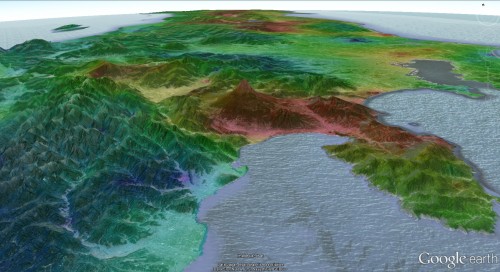
What lies beneath?: Mapping Mount Fuji. (Courtesy: Florent Brenguier)
By Tushna Commissariat
Plumbing problems do not get any bigger and more complicated than a backed-up volcano. But geophysicists looking at the responses of ground waves below Japanese volcanoes have now come up with a technique for identifying where pressurized volcanic fluids build up, allowing them to better anticipate when a volcano may erupt. Scientists already knew that seismic waves from large earthquakes agitate volcanic systems and that large eruptions generally follow a build-up of pressurized fluids at some depth. But they had been unable to pin down the specific physical changes that seismic waves cause. Now though, Florent Brenguier of the Institut des Sciences de la Terre in Grenoble, France, and colleagues at the University of Tokyo have used recordings of seismic-wave velocity from the devastating 2011 Tōhoku earthquake to create a map of seismic-velocity changes in its aftermath. Surprisingly, the largest changes were not observed in the area closest to the earthquake epicentre near the Pacific coast but farther inland, immediately below volcanic regions. The image above highlights an anomalously low seismic velocity below the Mount Fuji volcano after the earthquake, despite it being some 500 km from the epicentre. The drop in velocity is because the regions are susceptible to earthquake shaking – cracks in the crust open so that fluids at high pressures can escape, and could be seen as proxies for the high-pressure fluid build-up (Science 345 80).
View all posts by this author | View this author's profile
Robotic cowboys and clams, the SQUID at 50 and more
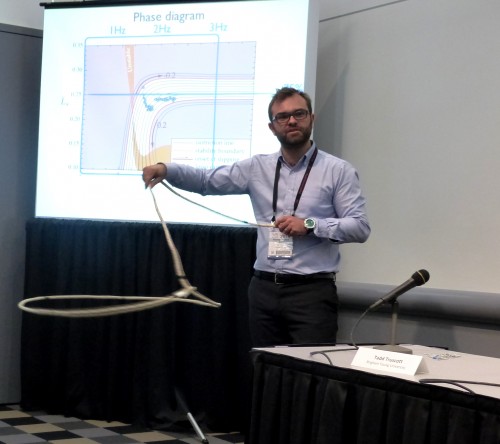
Pierre-Thomas Brun shows off his lassoing skills.
By Tushna Commissariat at the APS March Meeting in Denver
It has been another exceedingly busy day the APS March Meeting – there were sessions on the SQUID’s many applications, robotic clams, global health physics and the spread of epidemics, and even some toys based on physics principles. Here’s another quick round-up of the fascinating talks.
On SQUID row
It’s the 50th birthday of the superconducting quantum interference device or SQUID – a very sensitive magnetometer that accurately measures extremely subtle magnetic fields – this year, and there were sessions this morning to discuss its impact to date as well as possible future applications. Kent Irwin from Stanford University discussed how superconducting photon detectors that are used in a host of astronomical and cosmological observations are being amplified using SQUIDs. Such SQUID-boosted sensors are being used to make more accurate measurements of the cosmic microwave background (CMB) – to look at its power as well as certain polarizations modes it exhibits. As certain experiments look for signs of gravitational waves in in the CMB polarization, this could be particularly helpful.
View all posts by this author | View this author's profile
Colliding exhibits, influential researchers, edible particle-detectors and more
By Matin Durrani and Tushna Commissariat
If you’re in the tiny minority of people whose job title says “particle physicist”, chances are you’ll have been to CERN at least once in your career to help build a detector, analyse some collision data or muse in the cafeteria over supersymmetry (or the apparent lack of it so far). But for the rest of the world, going to the Geneva lab is simply not on the agenda, which is one reason why the Science Museum in London has this week unveiled a big new exhibition devoted to CERN’s Large Hadron Collider. Entitled simply Collider, the exhibition “blends theatre, video and sound art with real artefacts from CERN” that will, say organizers, “recreate a visit to the famous particle-physics laboratory”.
View all posts by this author | View this author's profile
The November 2013 issue of Physics World is now out
By Matin Durrani
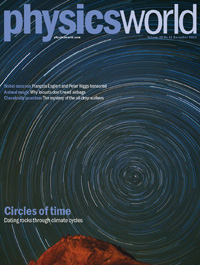
Well, despite all the excitement of last month’s special 25th-anniversary issue of Physics World, there’s been no let-up for us – we’ve been busy beavering away on the next issue of your favourite physics magazine, which is now ready for you to read in print, via our apps or online.
If you’re a member of the Institute of Physics (IOP), you can access the entire new issue free via the digital version of the magazine or by downloading the Physics World app onto your iPhone or iPad or Android device, available from the App Store and Google Play, respectively.
Our cover story this month is about a strange series of experiments, carried out by Yves Couder and Emmanuel Fort at Paris Diderot University, examining the behaviour of oil droplets vibrating on the surface of an oil bath. The droplets are classical in nature but also seem to show much of what would be expected of a quantum system, including interference patterns. So is this coincidence or not? Jon Cartwright investigates.
Scientists recreate pressures and temperatures found deep within the Earth
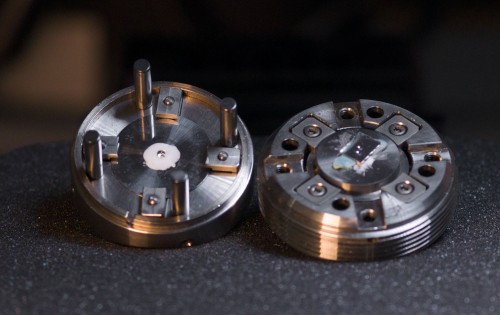
An opened diamond anvil cell. The diamond is visible at the centre of the left disc.
(Courtesy: ESRF/Blascha Faust)
By Ian Randall in New Zealand
We owe our existence to the liquid nature of the Earth’s outer core. Without its internal convection our planet would have no magnetic field to shield us and solar winds would rip away most of our atmosphere. Indeed, this is probably what happened to our neighbour Mars. Despite its importance, however, we don’t know that much about conditions within the core. This is why a recent high-pressure experiment is so important.
View all posts by this author | View this author's profile
Goodnight, Spirit
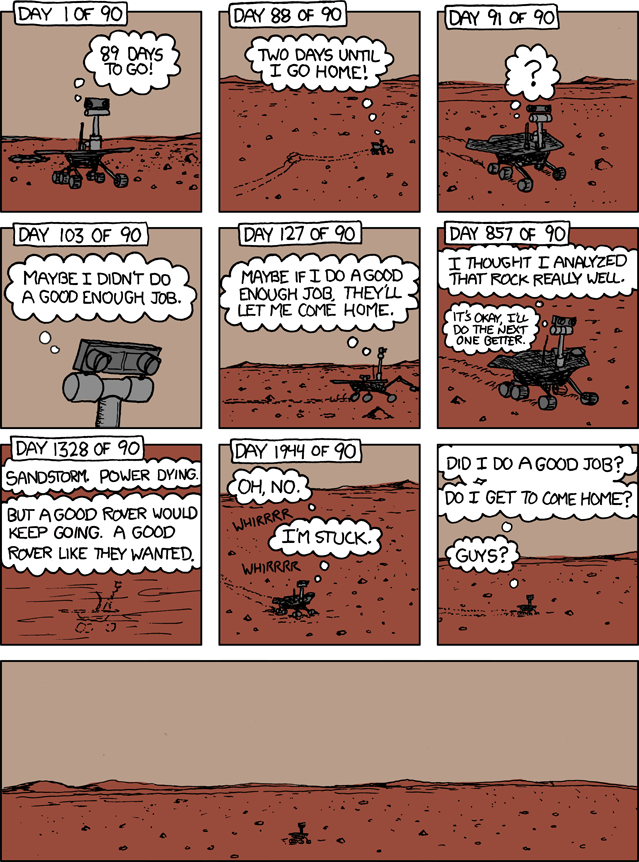
The “Spirit” comic strip on the xkcd.com webcomic (Credit: Randall Munroe/Creative Commons)
By Tushna Commissariat
The long and tumultuous journey for NASA’s Mars rover Spirit has finally come to an end, as the space agency’s engineers have ended attempts to regain contact with the vehicle, which has been out of touch since 22 March 2010. Now, Spirit’s twin, Opportunity, will explore the red sands solo until the arrival of younger brother Curiosity – NASA’s third rover, set to be launched in November.
The end of the road for Spirit came yesterday, when NASA engineers made a final and unsuccessful attempt to contact the rover. They had hoped that Spirit might rejuvenate as the solar energy became available once more, after a rather cold and dreary Martian winter without much sunlight. But without enough energy to run its survival heaters, the rover likely experienced colder internal temperatures last year than in any of its previous six years on Mars, possibly causing critical internal damage.
“Our job was to wear these rovers out exploring, to leave no unutilized capability on the surface of Mars, and for Spirit, we have done that,” says Mars Exploration Rover Project manager John Callas of NASA’s Jet Propulsion Laboratory in Pasadena, California.
Spirit landed on Mars on 3 January 2004 for what was planned as a three-month mission. After accomplishing its primary objectives, Spirit went on to explore a distance of 7.7 km, almost 12 times its initial goal. Spirit became the first robot to climb to the summit of a hill on another planet; and covered more than half a mile after its right-front wheel became immobile in 2006. Over time, it sent home more than 124,000 images, looked at 92 samples of soil and rock and unexpectedly discovered silica deposits in the Martian soil when it upturned soil due to a dragging back wheel. This was, ironically, one of the biggest discoveries made by a rover to date.
“What’s most remarkable to me about Spirit’s mission is just how extensive her accomplishments became,” enthuses Steve Squyres of Cornell University, Ithaca, a principal investigator for Spirit and Opportunity. “What we initially conceived as a fairly simple geologic experiment on Mars ultimately turned into humanity’s first real overland expedition across another planet. Spirit explored just as we would have, seeing a distant hill, climbing it and showing us the vista from the summit. And she did it in a way that allowed everyone on Earth to be part of the adventure.”
Just in case you are about to shed a tear, you might enjoy the above image that Randall Munroe, a former physicist who is now behind the popular xkcd.com webcomic, drew sometime last year when contact was lost with the rover. A rather touching and prophetic image, he brings out the human side of our robot geologist.
View all posts by this author | View this author's profile
